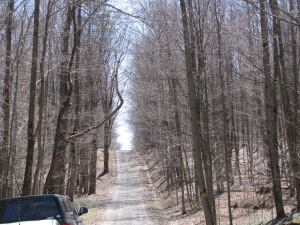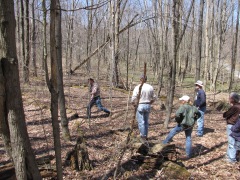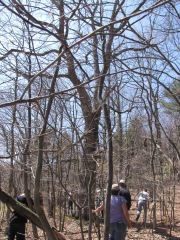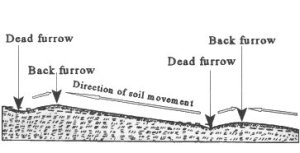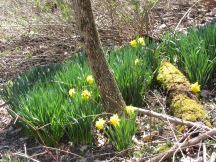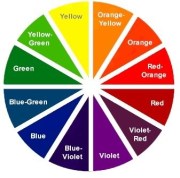2014/04/10
Today we took a short walk through one of Cornell’s natural areas- the Edwards Lake Cliffs Preserve. Unfortunately, despite both the excellent kiosk map and trail blazes, 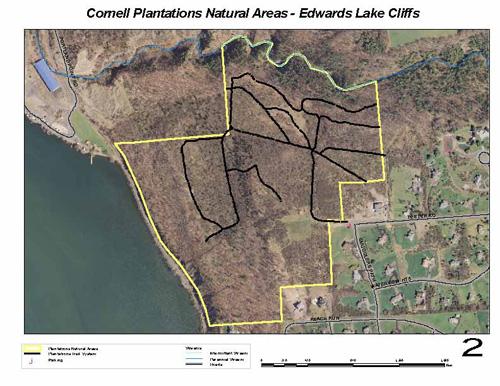 we managed to wander off course and miss the waterfall, not to mention the limestone cliff and lake view. Here’s some photos straight from the Plantations website, with the views we missed:
we managed to wander off course and miss the waterfall, not to mention the limestone cliff and lake view. Here’s some photos straight from the Plantations website, with the views we missed:
Still, it was a great walk, and a great job by the Natural Areas steward and Cornell staff that 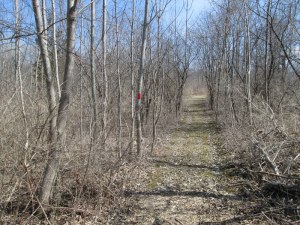 are maintaining it. There were plenty of invasives -to be expected, considering the neighborhood- but also flora and fauna of other sorts. We surprised a grouse, didn’t surprise what might have been an eastern black swallowtail, and, it being a bit early for wildflowers, identified some interesting trees.
are maintaining it. There were plenty of invasives -to be expected, considering the neighborhood- but also flora and fauna of other sorts. We surprised a grouse, didn’t surprise what might have been an eastern black swallowtail, and, it being a bit early for wildflowers, identified some interesting trees.
Now to suss out what we were looking at.
First off, we were north of Ithaca, near the east shore of Cayuga Lake. My Guide to Plant Communities tells me that if there are Juniperus virginiana (red cedars), and there 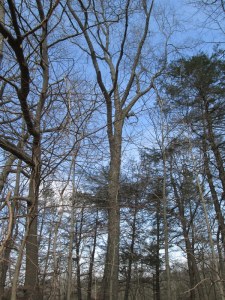 were, it’s either a dry upland or post-agricultural forest. We also spotted shagbark hickory,ashes,red & white oak (another dry upland tree) and bitternut hickory. Both juniper and oak are more likely to be present in high lime areas like Edwards Cliff. Interestingly, abandoned farm fields with limestone bedrock are also a favored habitat of swallow-wort, which we can testify is rife in the area. Mostly we were on a hilltop, on the south side of Gulf Creek facing north, and we definitely passed through post-agricultural fields.
were, it’s either a dry upland or post-agricultural forest. We also spotted shagbark hickory,ashes,red & white oak (another dry upland tree) and bitternut hickory. Both juniper and oak are more likely to be present in high lime areas like Edwards Cliff. Interestingly, abandoned farm fields with limestone bedrock are also a favored habitat of swallow-wort, which we can testify is rife in the area. Mostly we were on a hilltop, on the south side of Gulf Creek facing north, and we definitely passed through post-agricultural fields.
How close did I get to understanding what I was seeing? Here’s what the Plantations has to say:
This 84-acre preserve protects one of the rarest environments in the local region – the lake cliffs. Besides the lake cliffs, the other salient natural feature of the preserve is the gorge called Shurger Glen, cut by Gulf Creek, which, confusingly, gives rise to Portland Point. This is a forested ravine and winding gorge with breathtaking waterfalls, scenic views and rare species. Additionally, there are old fields, shrub thickets and successional forests all with a history of agricultural use. There is old forest on and upslope of the lake cliffs.





